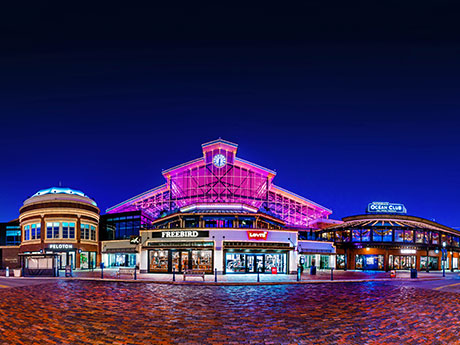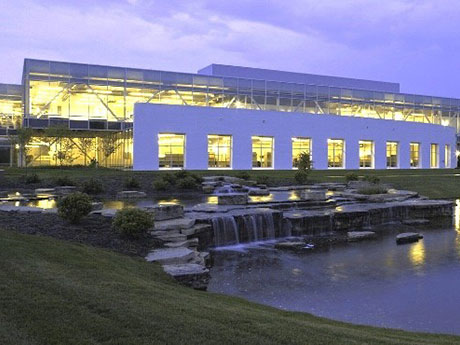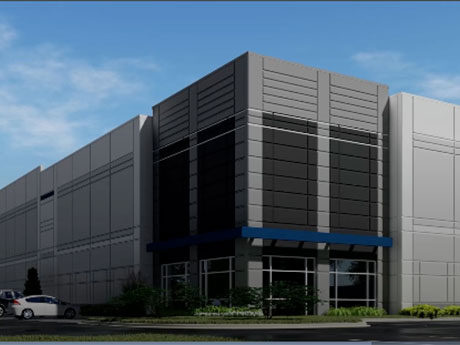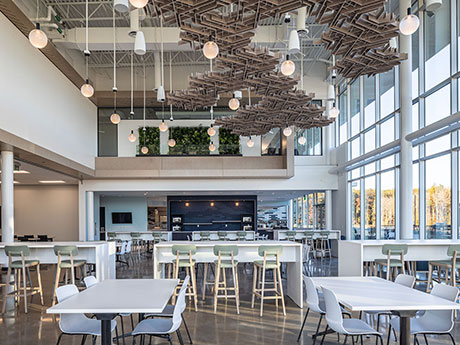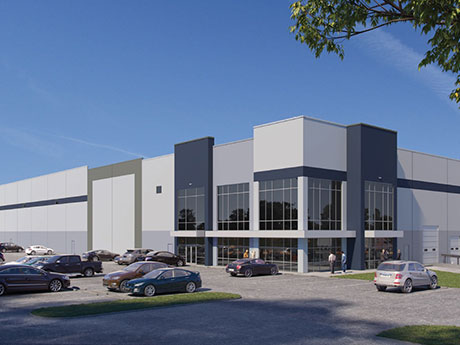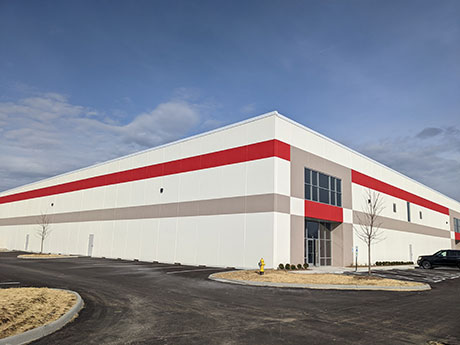By Spencer Jordan, Steiner + Associates The retail environment in Columbus, Ohio, is not just among the most unique and diverse in the Midwest, but in the nation. Columbus currently enjoys the fourth highest concentration of retail headquarters of any American city. Familiar names like Bath & Body Works, Victoria’s Secret, Express, Big Lots! and Chipotle all call Columbus home, and brands like Lululemon have significant logistics and distribution infrastructure in the city. But why is Columbus such a popular retail hub? What is the state of Columbus retail today? What sectors and neighborhoods are performing, and what are the trends to monitor when it comes to the future of retail in the Columbus market? Why Columbus? Among the many factors driving Columbus’s sustained retail success, the most important piece of the puzzle is the big picture: the city is thriving — and not just economically. Columbus placed eighth nationally in WalletHub’s recent rankings of all 50 state capitals, coming in ahead of popular high-profile markets like Denver, Nashville and Boston. The rankings are based on affordability, economic well being, quality of health and education, and quality of life. Columbus is one of the strongest Midwest markets in GDP per …
Market Reports
By Jamie Dunford, CBRE Outside of office product, Cleveland and Northeast Ohio haven’t historically been of interest for most out-of-town multifamily developers and investors. They viewed the region as a tertiary or secondary market with a declining population and a lackluster economy. Until recently, urban living in the central business district (CBD) and surrounding neighborhoods was rare — Cleveland was a commuter city with a strong office market from the 90s until the Great Financial Crisis (GFC) in 2008. At one point in time, Northeast Ohio boasted one of the highest concentrations of Fortune 500 companies with headquarters or other office space in the region, and the CBD had the largest job hub in the state of Ohio. Most office buildings in the CBD were owned by institutional capital or national developers. However, the GFC vastly altered this landscape as unemployment rose, companies left or downsized, and many office assets went back to the lender. This left an oversupply of office product in the market, and the older buildings suffered the most. However, this created a market opportunity that Cleveland developers seized, and the city eventually became a national leader in converting historic office assets to multifamily while taking advantage …
By Anthony Armbruster, Colliers Although converting former office buildings to multifamily properties is by no means a new practice, conversions have been on the rise in recent years due to the changing work environment and office landscape. While the COVID-19 pandemic has started to fade away in many peoples’ minds, several of the changes in the work environment during that time have not. Many formerly in-office employees continue to work from home or have hybrid schedules post-pandemic. Additionally, tenants who are moving into new office spaces have shown a preference for smaller, more efficiently laid out, amenity-rich and suburban Class A office spaces. These changing consumer preferences have resulted in higher vacancies and fewer new tenants for older downtown office buildings than before the pandemic. Consequently, many of these older buildings are being converted into residential spaces, exemplifying the trend. An office building may be considered for a residential conversion when it is no longer economically feasible to continue running the building as such. However, not every office building at the end of its economically useful life is a suitable candidate for a residential conversion. Factors such as a building’s layout, location, age and cost of conversion play the most …
By Aaron Duncan, CBRE Describing Central Ohio’s current office market conditions is like a kid making the “little bit of everything” drink at the self-serve soda fountain: a lot of ingredients go in and the result is, surprisingly, okay. The office market is filled with polarizing headlines — from the growth and success of suburban Class A+ product versus newly vacated assets, to sublease space swarming the stat line, and everything in between. Moreover, the sector continues to provide pools of negative and positive market conditions. One’s perspective on the market largely depends on which way they’re standing in that month but overall, much like that childhood concoction, it’s okay. The good and the bad For nearly three years, tenants leaned on ownership groups to let them put temporary solutions in place while they fully vetted their return-to-work strategies. Today, the good news is that tenants have finally figured it out and are confident about what their current and future footprints will look like. A strong indicator of this is the volume of headquarters transactions in the market, five of which were completed by our team: • Vertiv: 75,000-square-foot, suburban headquarters lease at 505 N. Cleveland Ave. • Surge Staffing: …
By Beau Taggart, Cushman & Wakefield Historically, Columbus was a steady-performing, secondary industrial market that saw minimal rent increases. Often, it was overshadowed by “big brother” cities such as Indianapolis and Chicago that were perceived as more appealing to institutional investors. After the great recession of 2008, though, Columbus began to mature economically, and the region began its meteoric rise as a leading big-box industrial market in the U.S. Located at the intersection of Interstates 70 and 71, within a day’s drive of 46 percent of the U.S. population and containing one of the only freight-only airports in the country, Rickenbacker Airport, Columbus began to attract more and more major retailers such as Zulily, Lululemon, Macy’s and Sam’s Club as well as e-commerce giant Amazon, which has opened several bulk facilities throughout the region. Additionally, three major intermodal terminals and major UPS and FedEx hubs strategically located throughout the area boosted Columbus from its secondary status to a primary inland hub on every major distributor’s radar. Like many markets, 2021 was Columbus’s most prolific year. Interest rates were at an all-time low, and users were compensating for COVID-fueled consumer demand. Asking rates grew by 14 percent and vacancy shot down …
By Rob Roe and Jessica Urbin, JLL What does the future of the office in Cleveland look like? While there isn’t one straightforward answer, there’s no doubt that the office of today looks much different than it did five years ago. Though some companies still maintain a traditional office space, the onset of hybrid work has indisputably changed the way many companies use — and choose — their real estate. This adoption of hybrid work has driven the market’s evident transformation. Smaller office spaces As companies adopt hybrid work models, the need for larger office spaces decreases. This doesn’t mean companies are eliminating their office real estate, though. In fact, 60 percent of office workers want to work in a hybrid style today, and 55 percent are doing so already. These downsized spaces support this work model by creating shared spaces, such as cubicles or lockers, as well as incorporating more conference rooms and small team rooms to hold private video calls. They also encourage something employees can’t get at home: in-person collaboration. New spaces are being outfitted with intentional spaces to meet, such as lounge areas, desks in open areas, cafés and more. In addition, having small spaces doesn’t …
By Alec Pacella, NAI Pleasant Valley The Cleveland industrial market enjoyed a strong first half of 2022, characterized by record-low vacancy rates, brisk new construction and increased rental rates and sales prices. Although the market has made several headlines over the first six months, many of these trends began several years ago and the pandemic only accelerated the activity level amongst several key sectors. Market wide, the average vacancy rate was just over 4 percent at the mid-year mark, which is a slight decrease from the 4.5 percent rate at the end of last year. By most accounts, this is a record-low level and represents a decrease of two full percentage points over the last five years. The most popular submarket, the Southeast, which encompasses favored industrial locations such as Solon, Twinsburg, Streetsboro and Aurora, finished the first half with a slightly higher rate of 4.4 percent. However, this market has also seen significant new construction, including a predominance of speculative projects. The submarket with the lowest vacancy rate is the Southwest, which stretches from Middleburg Heights through Medina, checking in at 3.7 percent. At the other end was the downtown submarket. Characterized by a significant amount of older properties, …
By Richard Meder, Colliers While office markets across the country have experienced a slow climb back to normalcy following COVID-19-related restrictions, the Dayton office market has found its strength in the Wright-Patterson Air Force Base (WPAFB). Though the Dayton office market around WPAFB experienced similar ebbs and flows as that of the rest of the country during the pandemic, business never stopped. For some in other markets, the lasting effects of this disruption to the office market remain unknown. Business leaders must decide whether to implement a remote work lifestyle into their employee regimen or make a push to get back to normal office life — for some companies it is considered a hybrid approach. For the tenants in the WPAFB submarket, however, there was never question. While many office tenants vacated their spaces out of uncertainty, defense contractors cautiously occupying office spaces at the WPAFB submarket almost singlehandedly helped Dayton remain upright during the pandemic. With the submarket almost entirely consisting of defense contractors, this type of defense contracting work was not allowed to stop with the rest of the world. Having to adhere to both local and federal guidelines, decision-making among defense contractors certainly slowed, but it never …
By Mark Volkman and Brian Leonard, JLL It’s no secret the industrial market has seen a monumental surge throughout the nation as a result of changing consumer behaviors. How developers in each city are combatting the demand, though, is a different story. The success of the industrial market in Cincinnati, in particular, stems from its affordable cost of living, strong labor pool and impressive accessibility. With the city being only an eight-hour drive away from half of the country, it’s become a viable option for tenants with a large footprint that want a lower-cost facility compared with the price of those in major cities like Chicago, New York City or San Francisco. Like other cities throughout the U.S., Cincinnati’s successes have come with both challenges and a variety of emerging trends. Learn about some of the most prominent ones below. 1. The emergence of the Cincinnati-Dayton metroplex With the heightened demand for industrial space comes the need for developers to find land not only in the city, but in its suburbs, as well. Dayton, a city about one hour north of Cincinnati via Interstate 75, has surfaced as a strong option for developers. Proctor & Gamble’s 1.8 million-square-foot distribution center, …
With low vacancy, positive absorption and robust leasing and investment activity, the Columbus industrial sector is positioned to experience a substantial amount of demand to continue throughout 2022 after a record-breaking year in 2021. Last year set the tone for historic construction and absorption and the market is poised to continue its strong momentum. It is easy to look at the map and see why Columbus is such a great logistics hub given its prime location within a 10-hour drive within 47 percent of the U.S. population, fairly flat topography and direct access to major freeways. There is one big piece of the pie that doesn’t always get noticed, which is the economic development powers that are putting Columbus on the map. Jobs Ohio and OneColumbus have done an incredible job attracting businesses to the state of Ohio. The biggest investment in the history of Ohio was announced this January when Intel revealed plans on building a new chip factory in New Albany. This $20 billion investment really put all eyes on the Northeast part of Columbus. As it gets tougher to get entitlements and zoning in other industrial submarkets, New Albany seems to be carrying a significant amount …


